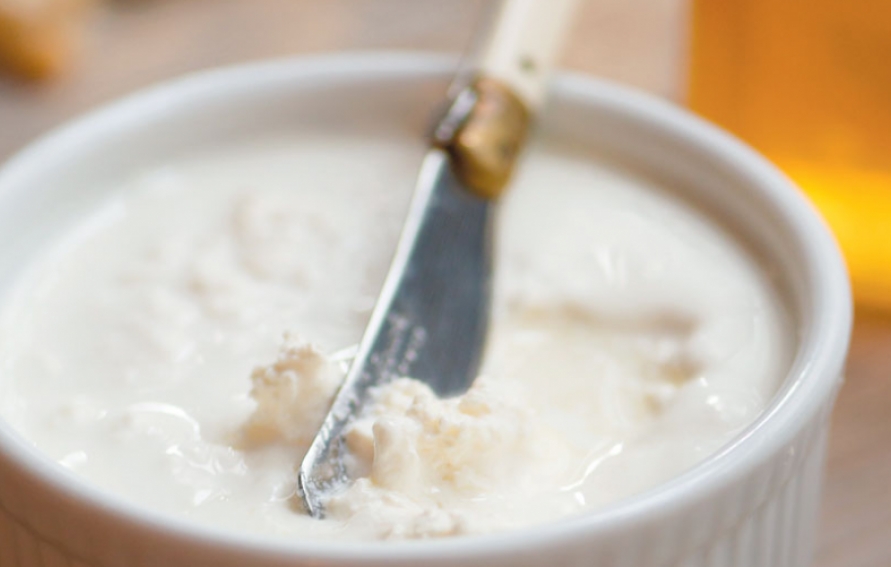Ingredients
- 1 gallon good-quality skim milk, such as Mauthe’s or Ryal’s
- 1 cup buttermilk
- ½ rennet tablet
- Half-and-half
Instructions
In a nonreactive pot, combine everything but the half-and-half over low to medium heat. Stir until the mixture reaches 80°F. for 5 minutes. Take the pot off the heat and let it sit for 2 hours. Put the solids in cheesecloth and allow the whey to drain for several more hours. Pack the curds in molds and top with half-and-half.
About this recipe
It’s not easy to find commercially produced Creole cream cheese today, but many people believe it has its origins with the French in New Orleans as far back as the 1700s. Dorignac’s of Metairie makes a version that’s based on the recipe from the old Gold Seal Dairy. Mauthe’s Progress Milk Barn makes a version and labels it with “Eat It to Save It,” which is the perfect call to action. Indeed, Creole Cream Cheese is listed on Slow Food USA’s Ark of Taste as an endangered food.
Creole cream cheese was particularly popular in the first half of the 20th century as a breakfast dish usually topped with sugar and served with French bread. Creole families made it at home, street vendors peddled it and dairies sold it. It was even offered on the breakfast menu at Brennan’s at one time.
Many factors contributed to its disappearance, but the final nail in the coffin may have been a change in regulations for dairies in the 1970s that no longer allowed them to produce bottled fluid milk and cheese at the same facility.
Cynthia LeJeune Nobles has a very good history of Creole cream cheese in the book New Orleans Cuisine: 14 Signature Dishes and Their Histories. She describes it as an “unpretentious farmhouse- style, single-curd, mildly tart artisan cheese.” It is easy to make at home if you can find good-quality milk.
Note that the following recipe, derived from John Folse’s recipe, is a modern one. There are more traditional ways of making it than heating up the milk, but this one works pretty well. Additionally, early recipes probably used bacteria from the air, forgoing the rennet.





